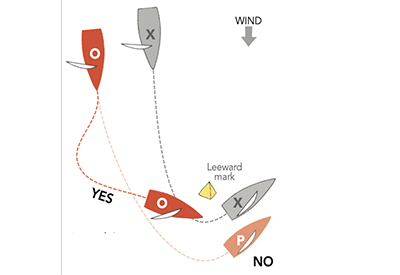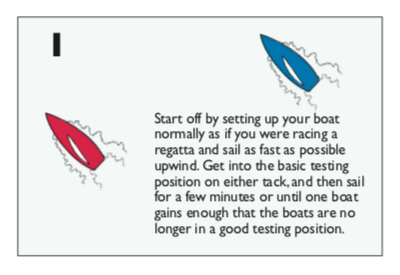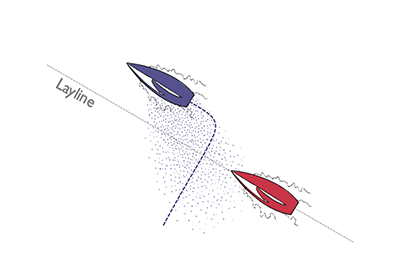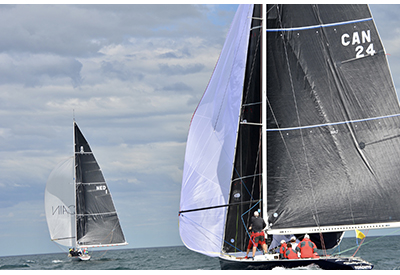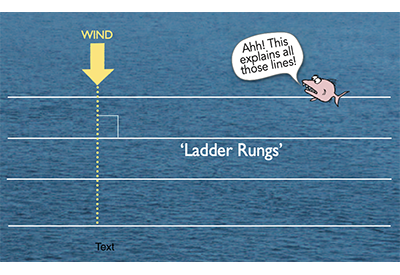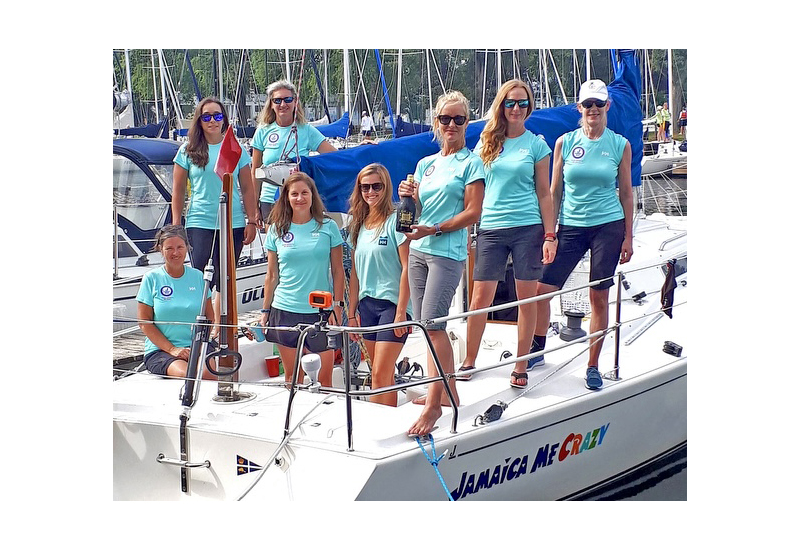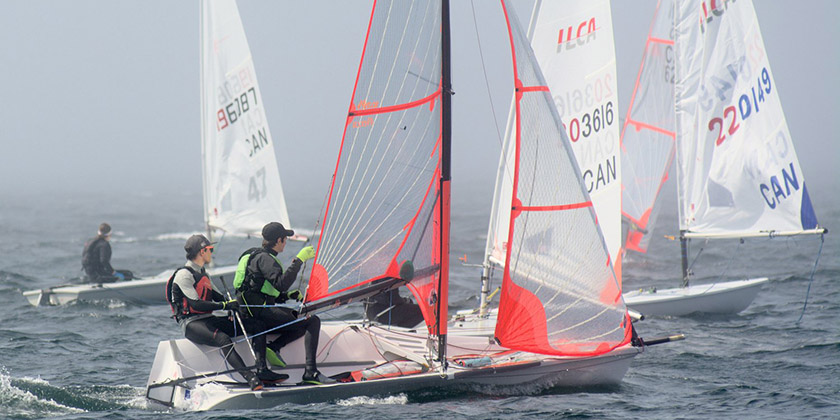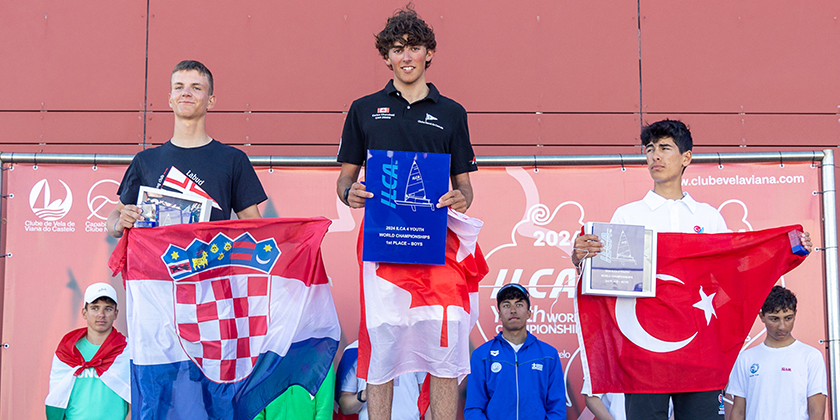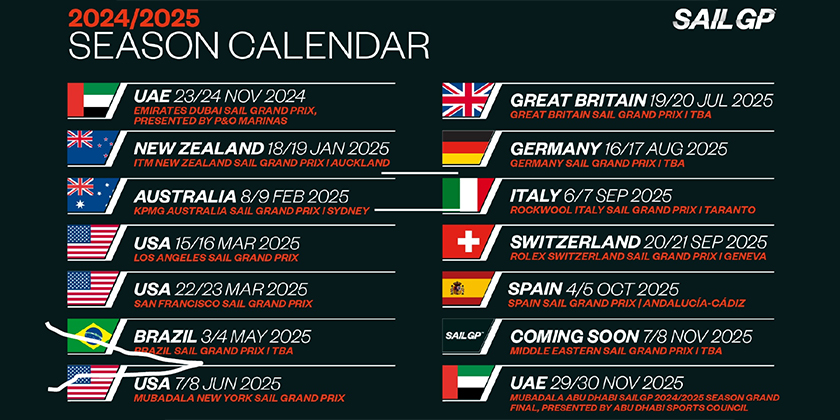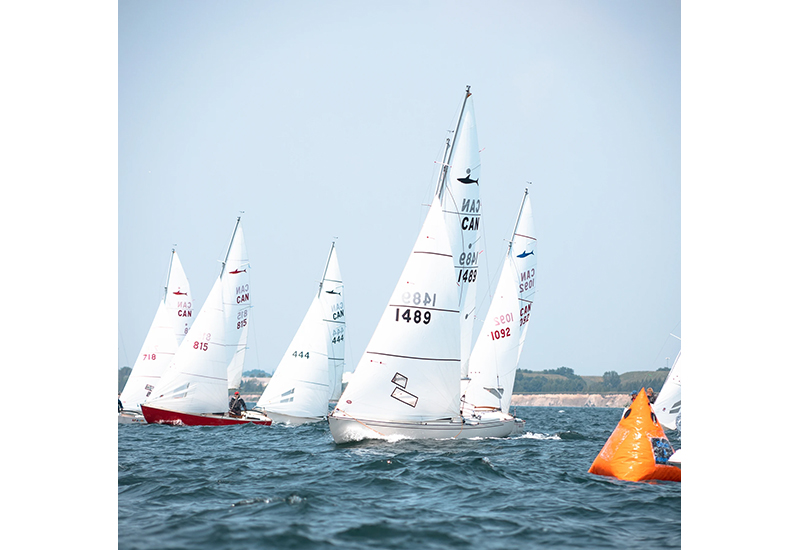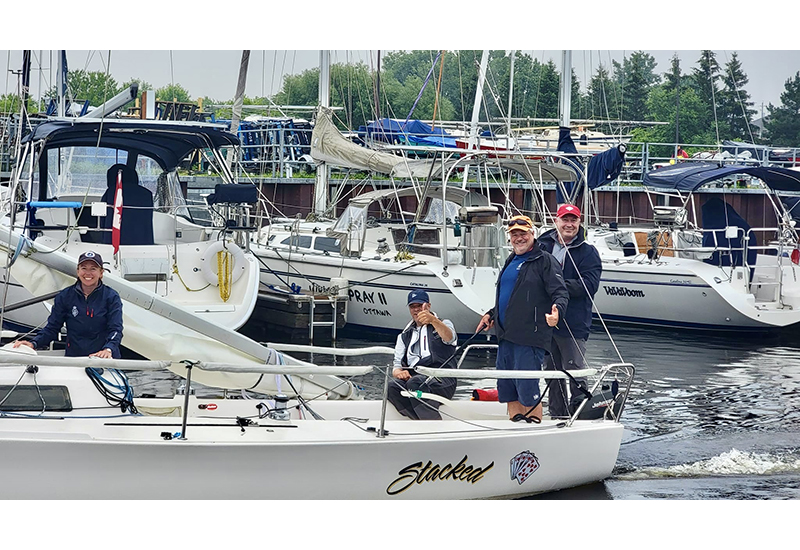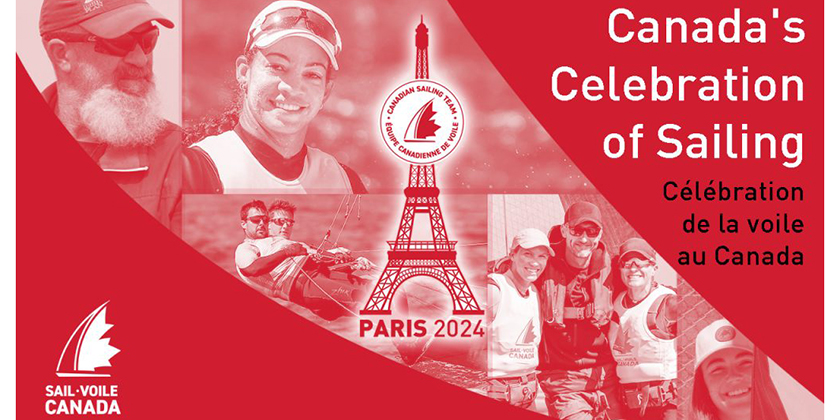Speed & Smarts: More on Headsail Trim – Telltales
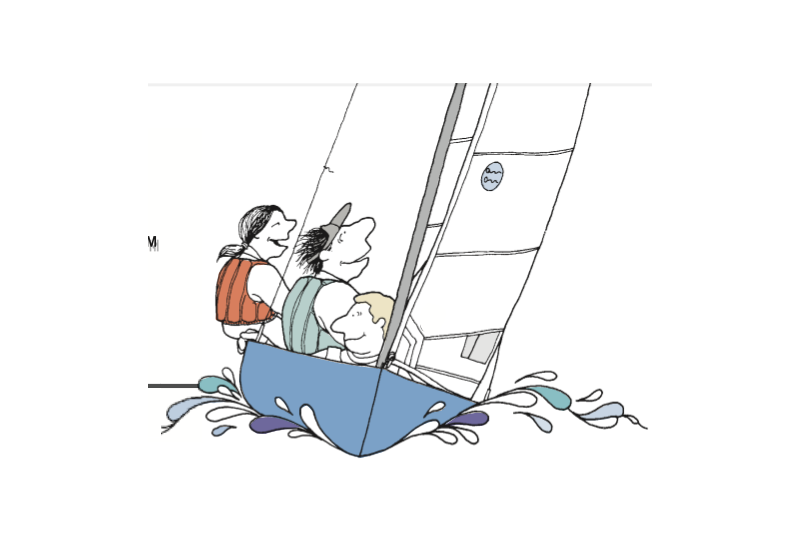
October 18, 2023
One of the best sail shape tools for a jib trimmer are telltales placed on each side of the sail along the luff. The position of these telltales varies slightly from boat to boat, but usually they are located about 8 to 12 inches aft of the luff of the sail. Three sets of telltales are the norm, evenly spaced up the luff.
When sailing upwind (or at any other angle of sail), the leeward telltales should never droop. If they hang limp, the sail is stalled – either the skipper is not heading high enough or the sail is overtrimmed. When this happens, the trimmer should ease the sheet to reattach flow. If the leeward telltales are stalling too easily or frequently, the sail’s leading edge angle may be too narrow (i.e. the luff of the may be too fine or flat). Fix this by letting the headstay sag more and getting a little more luff tension to round up the front of the sail.
Telltales along the jib luff are good indicators of the upwind “groove.” You should usually sail to windward with the weather telltales just lifting above a horizontal position. In flat water and medium to heavy air, you can sail in “feathering” mode with the windward telltales lifting vertically. When you are starved for power (e.g. in light air, waves), put the bow down a little so you sail with both telltales streaming straight aft.
• Steer by the middle telltales – If you watch the jib luff telltales to help with steering the boat upwind (and I think almost everyone does), be sure to use the telltales that are halfway up the sail. These are harder to see than the lower telltales, so you may have to sit farther forward or to windward to see them. This will be worth it, however, because the middle telltales give you the best average reading for the entire sail.
• Use a leech telltale – Try looking occasionally at the telltale on the leech of your jib near the top batten. When your sail is fully trimmed upwind, is this telltale stalled all the time, half the time, none of the time or something else? Look for patterns that will help you find the fastest trim across the range of conditions.
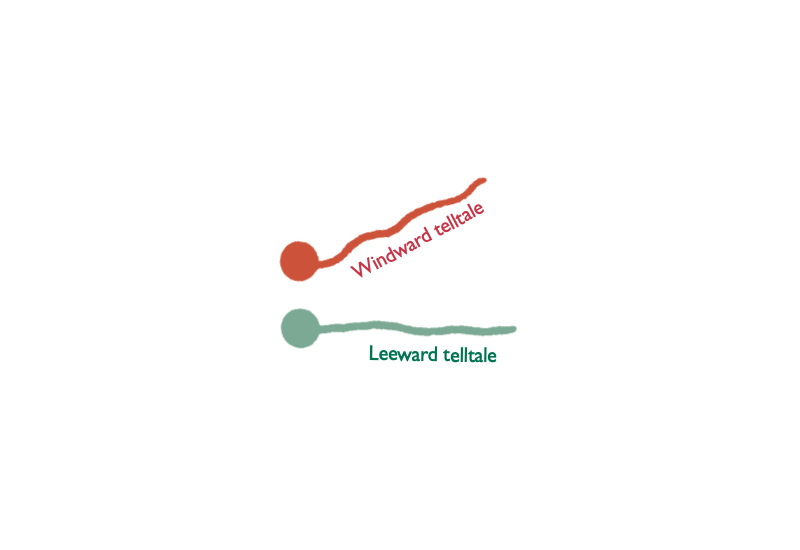
Normal mode Windward telltales lift slightly most of the time. Trim in this mode when you are looking for an optimal combination of speed and pointing to maximize VMG upwind.

Speed mode Both windward and leeward telltales stream straight aft. Put your bow down into this ‘footing’ mode when you: 1) are racing in light air, especially with waves; 2) need to accelerate; or 3) need to go fast for tactical or strategic reasons. To shift into speed mode, ease the jib sheet slightly and increase luff sag to power up your headsail.

Point mode The windward telltales fly nearly straight up most of the time, and the front of the jib often luffs. This mode is good when: 1) you are trying to maximize pointing in moderate wind and smooth water; or 2) you need to ‘feather’ or ‘pinch’ to depower when it’s windy. Shift into ‘point mode’ by trimming the sheet a little harder and reducing luff sag so the sail is flatter with a fine entry (i.e. a smaller leading edge angle).

Slow mode! You never want to sail with the leeward telltales stalled. Ease your jib sheet or get the helmsperson to head up closer to the wind (or do a combination of the two) until the leeward telltales flow straight aft.
Case study of a well-rigged boat
• Telltale series – Most sails have pairs of telltales at several points along the luff, but this jib has a row of three pairs at each location. This set-up gives the helmsperson and trimmer more accurate readings and more warning about changes to come. It helps them see the size of the steering groove (e.g. if all three windward telltales flutter at the same time, the sail has a flat entry and a narrow groove), and it avoids a common problem where telltales don’t work effectively because they are too close to or too far from the luff.
• Telltales near stripes – All the telltales are located near draft stripes. This makes it easy to see the action of the telltales and the corresponding shape of the sail simultaneously. If the draft stripe shows a fine entry (narrow leading edge angle), for example, you’d expect to see all three telltales acting similarly. But if the draft stripe shows a round entry, the telltales should behave more independently.
• Colour coordination – The telltales on the port side of the sail are all red. It is likely that the telltales on the starboard side are all green (and slightly offset from the red ones) so it’s easier for the helmsperson to distinguish between the windward and leeward telltales. The draft stripes don’t have to be different colors on each side because they are positioned back-to-back and, unlike the telltales, show exactly the same shape on each side of the sail.
• Night window – There is a clear window near the middle of the luff with a pair of telltales. This is for night racing when it’s difficult to see the leeward telltales through the sail fabric.
• Draft stripes – These sails have simple, clear draft stripes that make it easy to visualize their shape. One refinement is the addition of a small mark at the middle of each stripe (halfway between luff and leech). This is a helpful reference for judging the position of maximum draft. You can see, for example, that the deepest part of the jib is quite a bit forward of the mid-mark. This is consistent with the target draft position of around 40% aft for most headsails. The deepest part of the main is just slightly in front of the mid-mark. This is close to the typical mainsail draft position of 45% to 50% aft.
Trim guide for headsail controls:
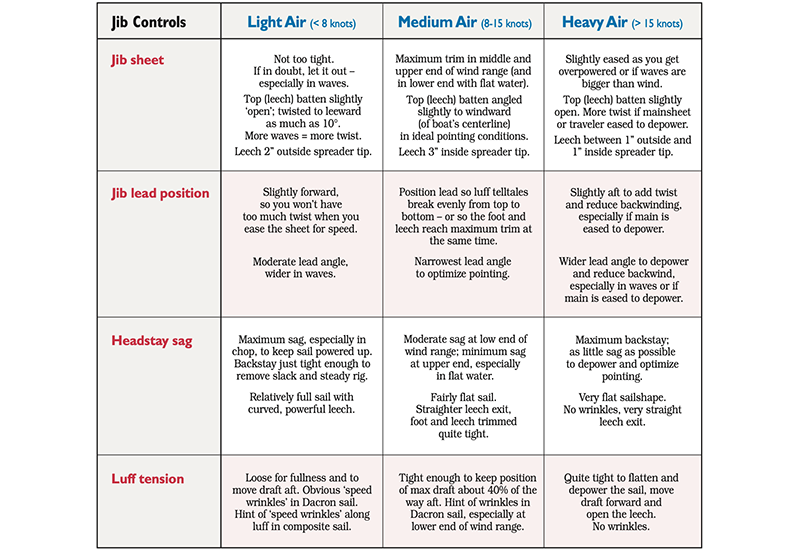
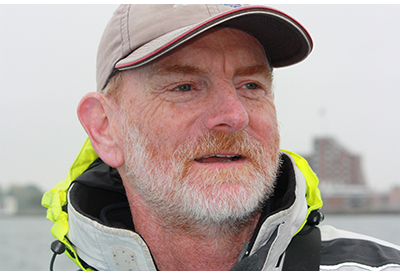
Dave Dellenbaugh is the publisher, editor and author of Speed & Smarts, the racing newsletter. He was the tactician and starting helmsman on America3 during her successful defense of the America’s Cup in 1992 and sailed in three other America’s Cup campaigns from 1986 to 2007. David is also two-time winner of the Canada’s Cup, a Lightning world champion, two-time Congressional Cup winner, seven-time Thistle national champion, three-time Prince of Wales U.S. match racing champion and past winner of the U.S. Team Racing Championship for the Hinman Trophy. He is currently a member of the US Sailing Racing Rules Committee (and was its chairman from 2005-2008).
You can subscribe to the Speed & Smarts newsletter HERE.

